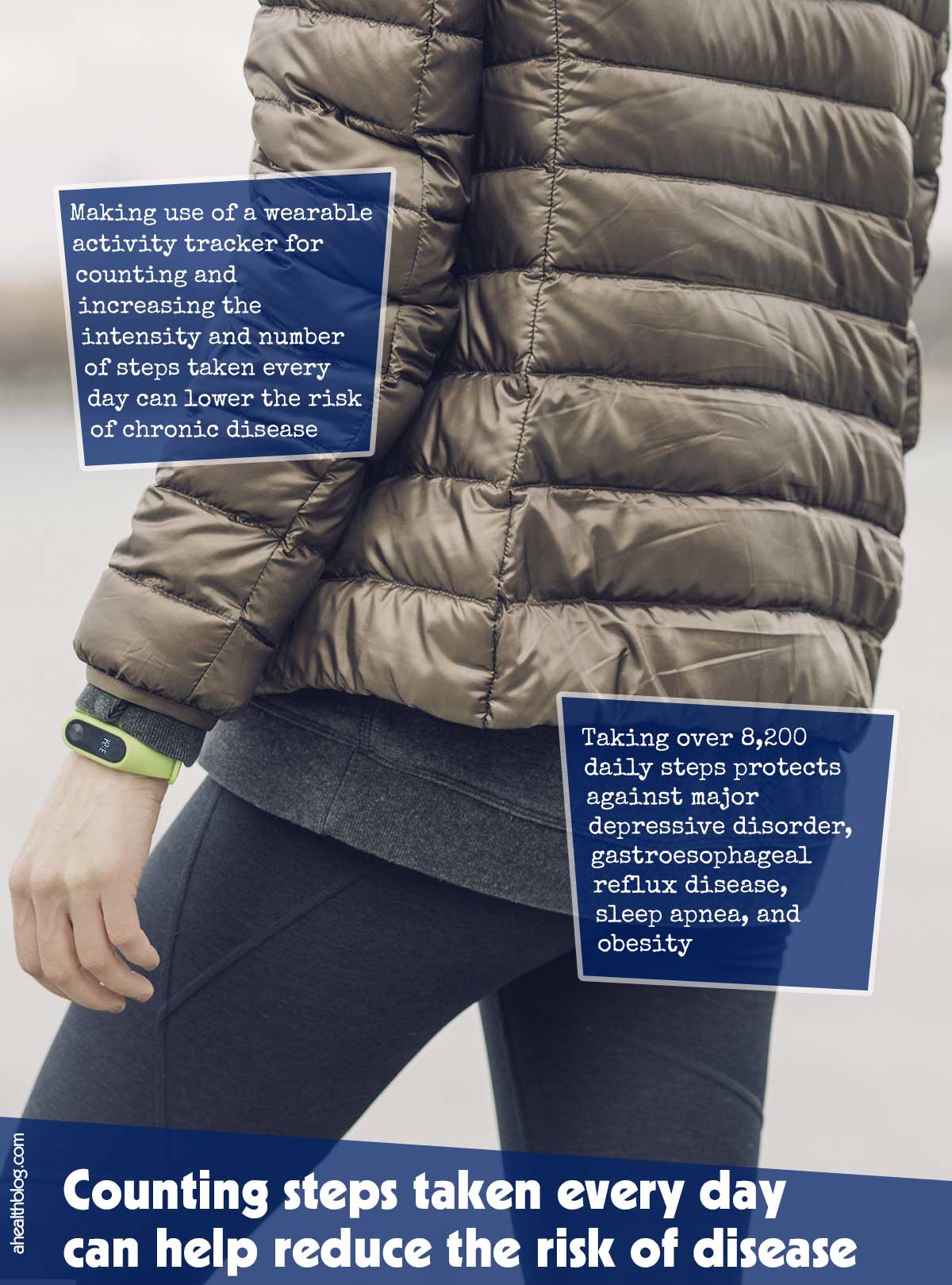Making use of a wearable activity tracker for counting and increasing the intensity and number of steps taken every day can lower the risk of various chronic diseases such as sleep apnea, obesity, diabetes, and hypertension.1✅ JOURNAL REFERENCE
DOI: 10.1038/s41591-022-02012-w
The integration of health monitors and commercially available wearable activity tracker data with the electronic health record (EHR) could be useful to medical professionals, who could utilize it for tailoring physical activity to the risk profile and clinical characteristics of a patient.
An average of 4 years of health data and activity were analyzed from over 6,000 individuals who had provided access to their EHRs and wearing Fitbit activity trackers a minimum of 10 hours each day.
Various disease occurrences across the complete human phenome of observable conditions and traits in the overall population were compared to individuals wearing Fitbits who participated in the study.
Taking over 8,200 daily steps (approximately 4 miles) protects against major depressive disorder, gastroesophageal reflux disease, sleep apnea, and obesity. The data indicates that obesity risk for overweight people can be reduced by 64% if their steps every day are increased from 6,000 to 11,000.
As the number of steps increased there was a reduction in risk for the majority of conditions, except for the risk of diabetes and hypertension, which didn’t decline further after individuals reached approximately 8,000 to 9,000 daily steps.
The individuals were between 41 and 67 years with had body mass indices between a healthy weight BMI of 24.3 to an obese BMI of 32.9. The participants were 84% white, 73% female, and 71% of them had a college degree.
The individuals wearing Fitbits are usually more active than the average individual, yet the fact that the researchers identified strong step and disease associations in this active population indicates even stronger associations could be present in a more sedentary sample.
Although more research is required in a more diversified and representative population, these results provide a necessary first step toward the development of personalized activity prescriptions, according to the researchers. Wearables can encourage individuals to exercise by enabling fitness goals to be set, measured, and tracked.




